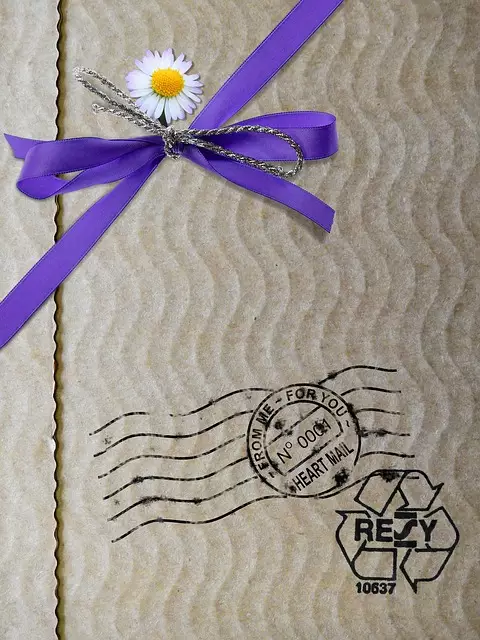
Wouldn’t it be nice if you could only pick the best products, put them in some beautiful boxes and ship it to those can’t-wait-to-get-it subscribers and voila! Job done. As tempting as that sounds, the reality for any business owner is rather different and much more complex.
It includes a lot of planning, strategizing, learning and inevitably, communication. But not any kind of communication – well-planned, diplomatic, official correspondence to various individuals. Stay with us, introverts (and extroverts!), as it is easier than it sounds. Actually, it will be especially easy after this article, and maybe even enjoyable.

As you already witnessed, almost every part of running a subscription box business can be fun, if you have:
- good guides (here you are, so you do)
- an open-mind
- creative approach
- a constant desire to learn more.
The secret is – the best entrepreneurs share these characteristics – reliable sources, creativity and readiness to evolve.
Transactional communication via emails, which we are going to cover today, is just a piece of the puzzle. There are also marketing (or commercial) and company forms of communication as well. As their names clearly state, these types of correspondences are focused on either reaching out to people and attracting them to your offer, or both internal and external company management.
Basically, transactional emails are focused on your customers – letting them know about certain information concerning their subscription and strengthening your relationship with them in general.
What the heck is a transactional email?
According to Mailchimp, a transactional email is the one that’s sent to the customer based on particular action or the lack of it (trans – action). The trigger for this kind of an email could be something that a customer did (ordered, as an example) or the lack of action (they didn’t complete the order because the alien invaded their computer, maybe).
To further describe transactional emails, they can appear in these forms:
- Weekly update
- Opt-in (double opt-in)
- Welcome email
- Any ‘thank you’ email
- Feedback survey
- Unsubscribe email
- Order confirmation
- Tracking email or shipping notice – the most common one for a subscription business and the most important for us now.
A shipping notice is sent when the shipment of the box is initiated, after a product (or products) are ordered by your dear customer. Though it is usually sent as an automatic email, because nobody really expects you to physically be on the look-out for every move your business makes, there are a number of things to consider while crafting it.
We will discover all the in-the-know, behind-the-scenes tactics to writing a proper shipping notice, as they can be a bit tricky. But first, let’s see why is this so important (and as a busy business owner, your time is precious and you should use it on valuable things only) to write a proper transactional email.
The power of transactional emails (they may not sound powerful, but they are)
Though the transactional email is not a marketing email, it does carry certain possibilities for you to engage with your subscribers and even grow your customer base and revenue. So, how can you use a tool that is not a part of the marketing weaponry, in a marketing-like way?
- Harness the deliverability
Unlike most typical marketing emails, such as newsletters or outreach campaigns, your customers perceive transactional emails more positively. Perhaps it’s the nature of these emails, because they are laser-focused and informative about the action that happened (or didn’t happen).
Whatever the reason, less transactional emails get sent into the seventh circle of hell or more widely known as – the spam or junk folder. - Rarely will you get that level of attention
So, transactional emails come as a consequence of an action (or inaction), you got that. Most often, there is a good reason why your customer made that move (action) and rest assured that your email will be read with deep attention. They expect information, not promotion, and we humans love valuable information.
Whenever you have a chance to infuse a bit of healthy promotion into an informational content, take advantage of that chance.
- How powerful is the anticipation? Imagine you just ordered the most awesome subscription box ever! You’re not just going to get up from the computer and go on with your life, right? Closely and patiently, you are going to observe your inbox, refresh it over and over again (we’re guilty of this), until you see that confirmation email. Yup, that one transactional email. See how fast you are learning!? Here, have an imaginary chocolate bar. Well, your customers are eagerly awaiting for that email, and it’s a golden opportunity for you to grab their attention even more! Remember, you should use every single opening to connect with your subscribers and differentiate from your competitors, because truth be told, there are not many chances to do that.
- Calls for further action are welcome. When your subscriber reads anything from you, what are you dreaming about? Them hitting the delete button, of course. NOOOOOO! What you want them to do is – take further action. Usually, when it comes to marketing emails, it is extremely, painstakingly difficult to get a reader to take action. But with transactional emails, it comes naturally.
Whether it is clicking to activate an account or seeing the status of their package somewhere or anything similar, the customer has to make a move. This is also a genius chance for you to connect with them and engage on a deeper level. Submarine deep level, yes.
Shipping notice – an example of the transactional email
Let’s see how can you use the power of transactional emails and craft one that will successfully get your subscribers from point A to point B.
We’ll take a shipping notice as an example and take you by the hand, to show you a simple process of how to write it, like the true business master you are. A shipping notice is an important part of your business, as you’re probably (hopefully) going to send out lots of them, so pay close attention. Follow us, young padawan.
Crystal clear, simple as ABC or 123
Remember that when you’re sending a transactional email, the main things you are sending is information.
Hence, keep the text flow clear, easy to navigate through and simple in expression. Be careful of visuals, such as photos, graphics, even the use of colors, as it might distract the reader. Try to stick to plain text and links, give your best to avoid possible distractions.
Signup & Try Subbly For Free
Wait a moment now – how can I connect with my customer (as you told me to), without visual stimuli?
Words are your friend, as they are the most powerful tool of communication. Seems so obvious, yet so many business people tend to forget this – words are your weapon. A weapon to reach, intrigue and keep your customers.
So, every single transactional email you write, including the shipping notice, should be clear, but personal. Greet your customer as you would say hi to your friend, but give all the necessary information. It’s a fine blend of notifying, a personal approach and a professional tone.
An example of the shipping notice
Let’s see what a shipping notice would look like, if your customer ordered a healthy food box.
Subject: The Delicious Box coming your way!
Body of the email:
Hello there, (first name), how are you?
I’m so happy to let you know that soon you’re going to enjoy amazingly healthy food – YOUR DELICIOUS BOX is on its way! Yummy.
Your shipment started 12/5/2017 and we are sending you the box via USPS.
The box will arrive to:
(Full name of the customer)
(Full address)
(Contact details – optional)
Make sure everything is fine, track your shipment here: (Insert tracking URL)
To make sure you’re home when it arrives: it takes 2-3 days for the box to get to you.
Ask any questions, feel free to shoot us an email (we love emails!) to: [email protected]
Enjoy your Delicious Box, looking forward to seeing those mouthwatering Insta photos,
Cheers!
(First name) from YourBusiness.com
(Optional) – add a sentence or two about a discount or any other offer that might interest your customer too. Do this carefully, discreetly, and never link an offer that has absolutely nothing to do with the ordered box. Connect the products as much as you can.
Double check all the information
To make sure that your customer is getting informed (and that is the essence of a transactional email), please check all the information and its order a couple of times.
These are the factors to consider:
Is it clear?
Readable?
Well organized?
Is it boring? (It shouldn’t be boring, no-no.)
Which call to actions should you add?
After, and only after you have stated all the necessary info, consider adding a small call to action. It could either be a sharing button for social network(s) or a link to a group, if you have one, where your subscriber can connect with like-minded people.
For monthly subscribers, it could be a comment box for them to include a testimonial of the products they’re enjoying.
For new subscribers, it could be a question – how did they find out about your offer or an invite to join your newsletter, if you have one. To boost your knowledge and see how this works in practice, sign up for one of these subscription industry newsletters. How do they communicate with you once you’ve entered your email?
You got it – whatever connects you with the subscribers more deeply, is welcome.
Always go one step beyond
Brainstorming material – how can you further improve and customize your other transactional emails?
Remember, some of the transactional emails are:
- weekly updates,
- opt-in confirmations (double opt-in),
- welcome emails (oh, these are the powerful ones, such a nice way to instantly connect with your customer and keep them near!),
- various ‘thank you’ emails (always be grateful),
- feedback surveys and questionnaires,
- unsubscribe emails (why not try to gently bring the customer back – with a bit of humor, carefully crafted?)
- and other confirmations of different kinds.
Make sure that you’re providing all the important information, in a nice, clear, simple order, with a little bit of personality, humor (if it fits in your brand and company voice), and originality. Now go and write some amazing emails!
Signup & Try Subbly For Free
Subbly – the purpose built platform for starting and growing subscription businesses








